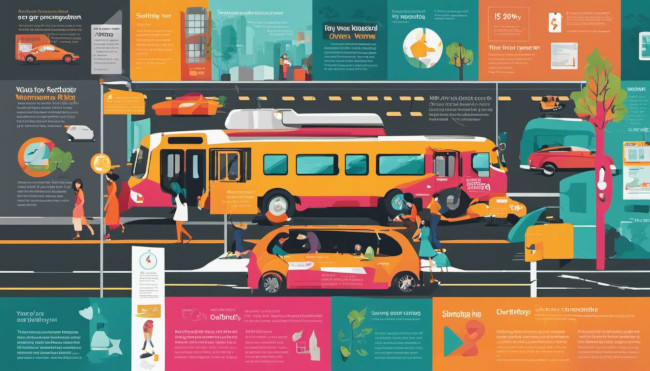Safety Tips for Women

Stay Alert. Stay Safe. Stay Empowered.
Key Takeaways:
✅ How to stay safe in public spaces and avoid risky situations
✅ Essential self-defense tools every woman should consider
✅ Smart home security tips to deter intruders
✅ Travel safety strategies for solo women
✅ How to respond to threats and protect yourself
Every Woman Deserves to Feel Safe
Feeling unsafe in public or even at home is a concern for many women. However, fear shouldn't dictate your life. With the right safety strategies, you can boost confidence, stay alert, and protect yourself in any situation.
This guide covers practical, battle-tested safety tips every woman should know—whether you're walking alone, traveling, or safeguarding your home. Let’s dive in.
Navigating Public Spaces: Stay Aware & Stay Safe
One of the best ways to prevent danger is to stay aware of your surroundings and make smart choices.

Stay Alert to Your Surroundings and Avoid Distractions
1. Avoid Distractions
- Stay off your phone when walking alone—texting or scrolling makes you an easy target.
- Keep one earbud out if listening to music, so you can hear what’s happening around you.
- Trust your gut—if something feels off, change direction or enter a public place.
2. Walk Smart, Not Scared
- Stick to well-lit, busy areas when walking alone, especially at night.
- Walk with confidence and purpose—criminals target people who appear distracted or timid.
- Carry self-defense tools (like pepper spray or a personal alarm) in your hand, ready to use.
3. Beware of Common Safety Red Flags
- Unmarked vehicles idling near sidewalks or parking lots.
- Someone following you for multiple blocks.
- Strangers asking personal questions or invading your space.
If you notice any of these signs, act immediately—cross the street, enter a store, or call someone to let them know where you are.
Avoiding Risky Situations: Prevention is Key
While we can’t predict every danger, we can take steps to reduce risk and deter threats.
1. Social Settings & Nightlife Safety
- Always watch your drink—never leave it unattended.
- Arrange a buddy system when going out with friends.
- Call for help if harassed—don’t hesitate to involve security if someone makes you feel unsafe.
2. Ride-Sharing & Transportation
- Verify your ride—check the driver’s name, photo, and license plate before getting in.
- Sit in the back seat for better control of exits and personal space.
- Use location-sharing to let someone track your trip in real time.
Home Security: Fortify Your Personal Space
Criminals often target women living alone or in vulnerable home setups. Here’s how to make your home a less attractive target.
1. Secure Entry Points
- Install high-quality deadbolts on doors and secure windows with locks.
- Use motion sensor lights to deter intruders at night.
- Consider a home security camera or alarm system (even a doorbell camera adds extra protection).
2. Create the Illusion of Occupancy
- Leave a light or TV on when away at night.
- Park your car in different spots to make it appear that people are coming and going.
- Don’t advertise being alone—avoid telling strangers online or in person that you live by yourself.
Essential Self-Defense Tools for Women
Carrying the right self-defense tools can increase confidence and preparedness.
My Kitty Keychain Weapon
✅ Pepper Spray: A fast-acting deterrent that temporarily blinds attackers.
✅ Stun Guns: Immobilizes threats with an electric charge (check local laws).
✅ Personal Alarms: Loud sound attracts attention and deters criminals.
✅ Keychain Weapons: Compact tools like kubotans or Strike-n-Spray devices.
Pro Tip: Train yourself on how to use these tools effectively. A tool you don’t know how to use is useless in an emergency.
Travel Safety Tips for Women
If you’re traveling alone or in an unfamiliar area, situational awareness is your best defense.

Traveling Alone Safety Tips
1. Before You Leave
- Research your destination—know safe and unsafe areas.
- Book accommodations in reputable locations.
- Share your itinerary with a trusted friend or family member.
2. While Traveling
- Avoid carrying large amounts of cash.
- Be cautious with strangers—not everyone has good intentions.
- Know local emergency contacts (police, hospitals, embassies).
How to Respond to Threats: Fight or Flight?
If you ever find yourself in danger, your response can make all the difference.

1. De-escalation Techniques
- Keep a safe distance from potential threats.
- Use firm body language and a strong voice to set boundaries.
- Avoid engaging in arguments—some people are looking for a reaction.
2. If Confronted by an Attacker
- Make noise. Yell "Fire!" or "Help!"—this draws attention.
- Use your self-defense tool. Aim for the attacker’s eyes, nose, throat, or groin.
- Escape if possible. Your goal is to get to safety, not to fight.
3. If You’re Being Followed
- Cross the street and check if they follow.
- Enter a crowded store or public place and ask for help.
- Call 911 and let them know your location.
Self-Defense Training Tip: Consider taking a basic self-defense class to learn effective escape techniques.
Final Thoughts: Confidence is the Ultimate Weapon
Safety isn’t about living in fear—it’s about being prepared, aware, and in control. By incorporating these women’s safety tips into your daily life, you’ll feel more confident and secure wherever you go.
Do you have a favorite safety tip? Share it in the comments!
Need a self-defense tool? Check out our top-rated pepper sprays, stun guns, and personal alarms!
Add your comment now!
Post CommentRecent posts
-
03/12/2025Best Stun Guns for Self-Defense in 2025
-
03/11/2025How to Prevent Kidnapping – Top Safety Tips
-
03/11/2025What Do Rapists Look For? 10 Red Flags to Avoid

